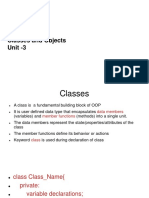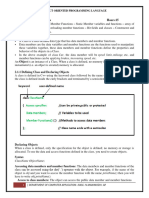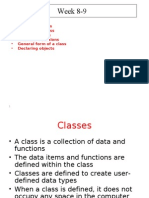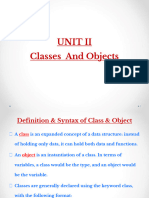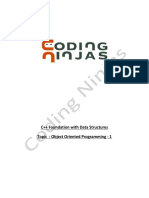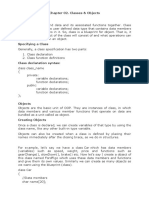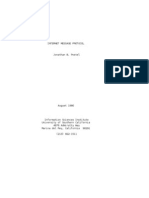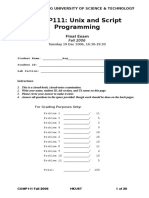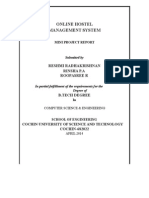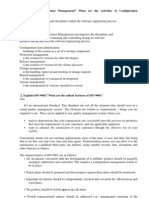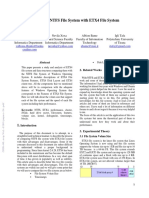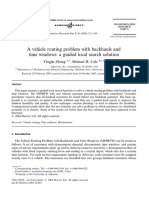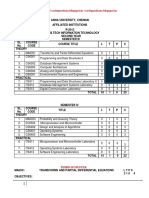0% found this document useful (0 votes)
379 views60 pagesUnit: 2 Objects and Classes: Trim II, MBA Tech Div A Subject: CP
The document discusses concepts related to object-oriented programming including classes, objects, encapsulation, data hiding, and class members. It provides examples of defining a class with private and public members, creating objects of a class, defining member functions inside and outside the class, and using static class members and functions. It also discusses arrays of objects and provides code examples to illustrate various OOP concepts.
Uploaded by
Parth PatelCopyright
© Attribution Non-Commercial (BY-NC)
We take content rights seriously. If you suspect this is your content, claim it here.
Available Formats
Download as PDF, TXT or read online on Scribd
0% found this document useful (0 votes)
379 views60 pagesUnit: 2 Objects and Classes: Trim II, MBA Tech Div A Subject: CP
The document discusses concepts related to object-oriented programming including classes, objects, encapsulation, data hiding, and class members. It provides examples of defining a class with private and public members, creating objects of a class, defining member functions inside and outside the class, and using static class members and functions. It also discusses arrays of objects and provides code examples to illustrate various OOP concepts.
Uploaded by
Parth PatelCopyright
© Attribution Non-Commercial (BY-NC)
We take content rights seriously. If you suspect this is your content, claim it here.
Available Formats
Download as PDF, TXT or read online on Scribd
/ 60

























